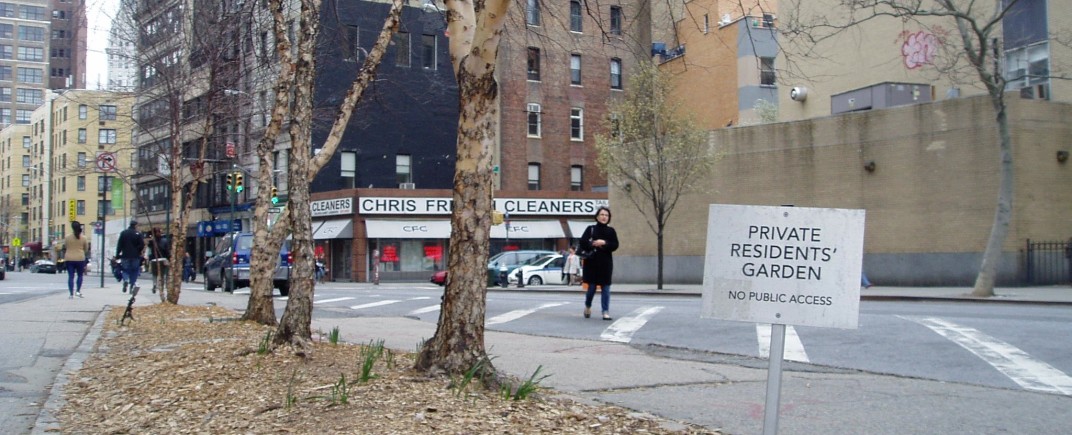This interview-style blog post with co-director Lily Bernheimer is reposted from Impact HUB Kings Cross, who will be screening Open to the Public? as part of the Regeneration Film Festival and Awards on Friday July 11th. We hope you’ll join us for some great short films and discussion about how to enhance regeneration through evidence-based, user-centred design — get your tickets now! ……
What inspired you to create your film?
I made Open to the Public? with a New York City media collective called Paper Tiger TV, where one of my collaborators, Barbara Ophoff, first had the idea to examine the history and future of public space. Paper Tiger had recently made another documentary about The Right to the City with geographer David Harvey. I had been working on transforming streets into places for people rather than cars with StreetFilms, but was curious to explore human-centred design in more traditional public spaces like parks. We wanted to understand how public space had gone from being a primarily political space to a space of leisure, how this defines our understanding of who “the public” are, and how we can design and manage successful spaces for diverse communities and uses.
What does “regeneration” mean to you?
Regeneration means finding out what once made a place tick, why it’s not thriving now, and strengthening it in a way that builds upon this specific history and community rather than grafting on an external model of success.
How can others adapt their local communities?
While the documentary is not only about New York City, it does focus in on two sort of contrasting stories of public space regeneration there. The first looks at how the under-used city parks were revitalised in the 1980s through a foundational evidence-based design process where research was conducted to understand how people were using the parks and how more people could be drawn in. This human-centred approach was really effective, but improving the parks also led to them being privatised in various ways, which has led to exclusion and restrictions. The other regeneration story is about how communities all over the city reclaimed vacant lots and made them into community gardens. I think these contrasting examples say a lot about different models for regeneration today more generally, and the challenges and opportunities they involve. Collectively managed regeneration work is amazing, but may be more difficult to implement in a bigger scale project like an entire neighbourhood or large park. Finding a way to combine the strengths of both approaches would be really great.
Is this your day job?
Currently, I am co-director of Space Works Consulting, an environmental psychology consultancy using human factors expertise to make spaces work better for the people and organisations who use them. Our main focus so far has been in workspace—transforming workplaces to better support well-being and productivity, and to encourage sustainable behaviour. But we have also worked on public realm and housing projects, and are starting a new initiative to expand into these areas. We are really excited to explore how the evidence-based, user-centred design techniques we use can strengthen regeneration projects in the UK, and are looking forward to discussing this at the July 11th event.
Any advice to potential film makers/ people interested in regeneration?
I had virtually no videography experience when I started working on Open to the Public?, so don’t let that hold you back from making a documentary of your own!
For the previous blog post, click here.

